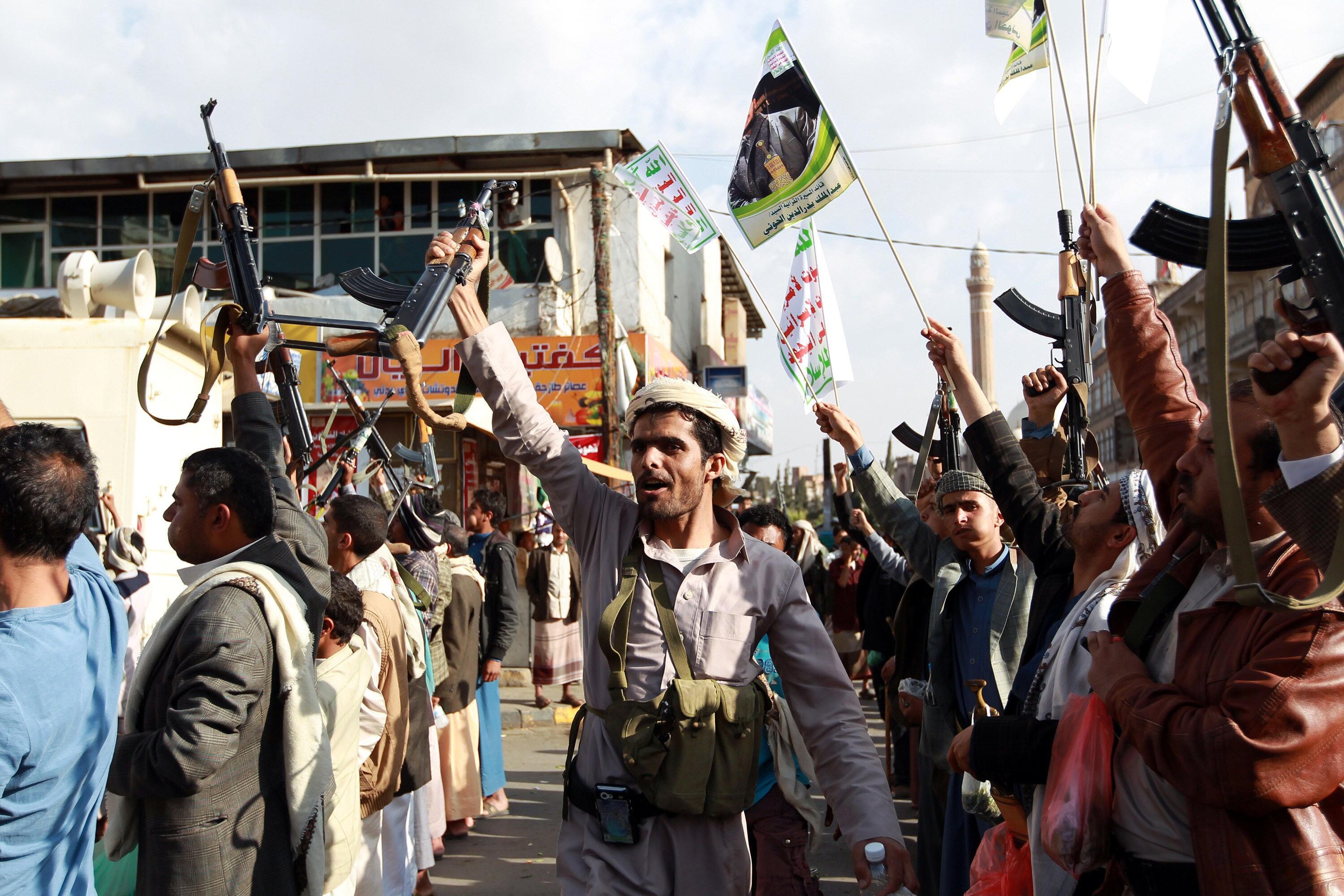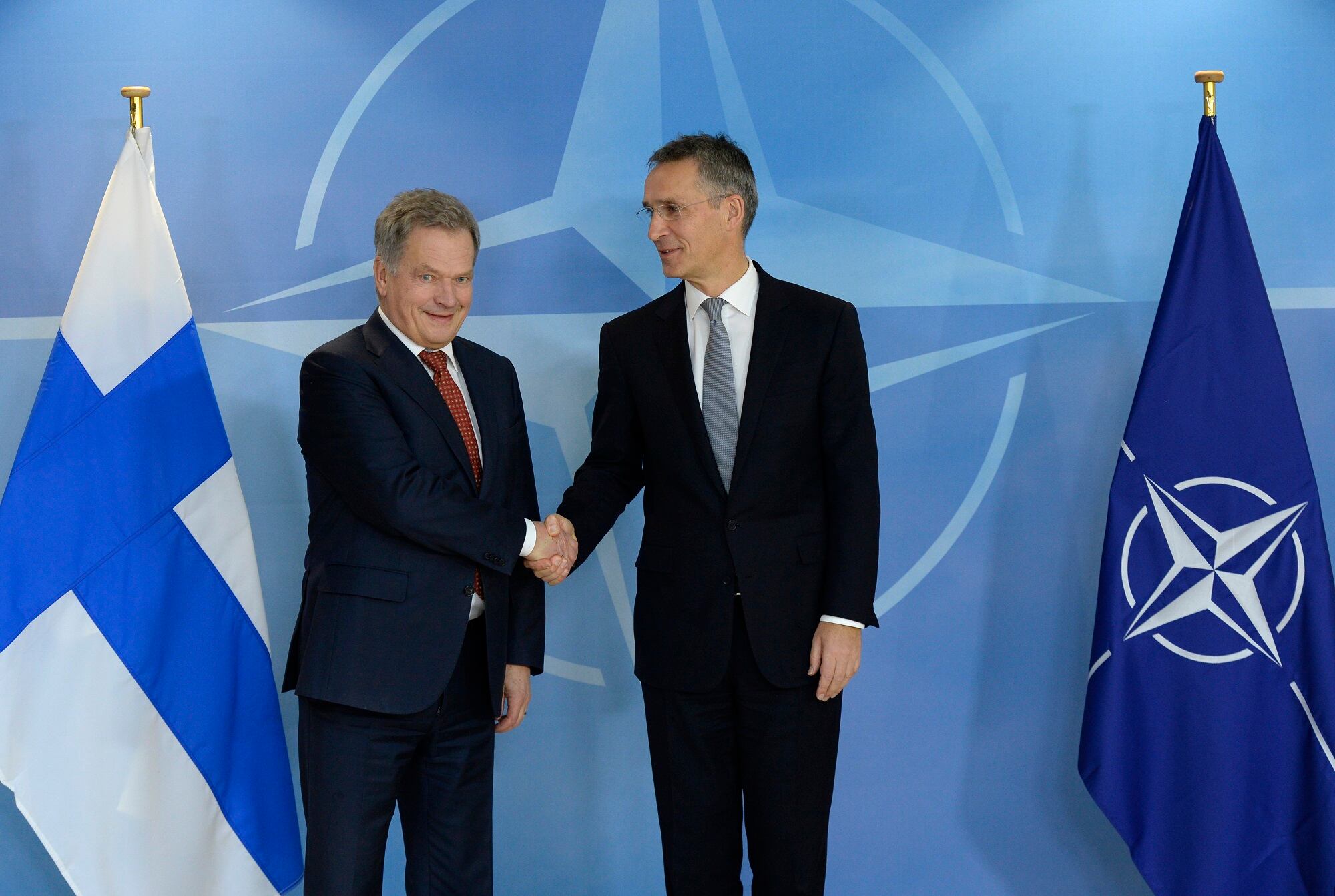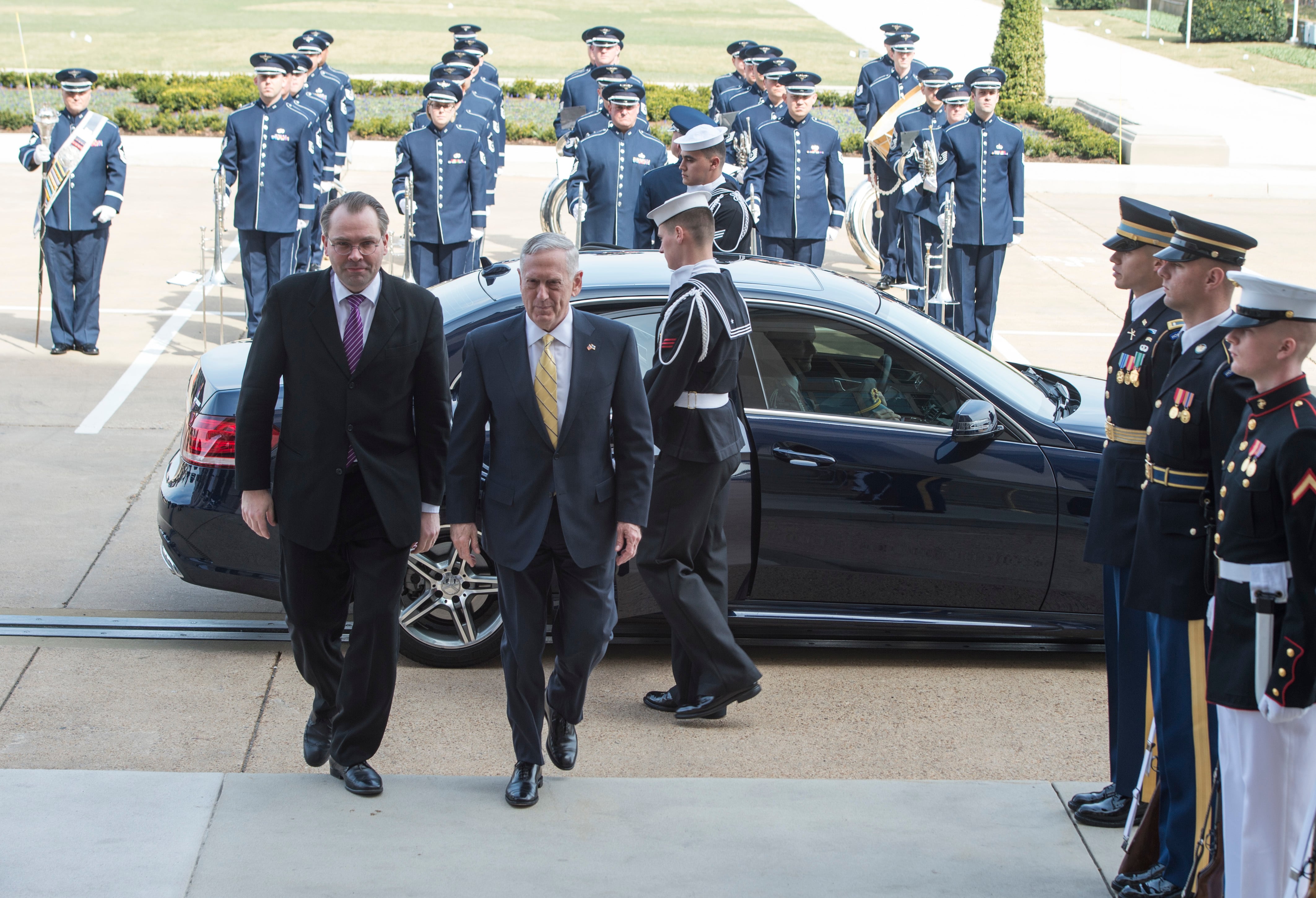HALIFAX, Canada — As tension between Russia and NATO continues, Finland finds itself in a difficult position due to its shared border with Russia. While it remains unaligned with NATO, Finland is moving on a similar trajectory as many of its Western European neighbors, with plans to funnel more money into its defense budget and increase participation in training exercises.
Gen. Jarmo Lindberg, head of Finland’s Defence Forces, is charged with leading the country’s military as it grows its reserve force and makes several large technology investments. During the Halifax International Security Forum in November, he spoke with Defense News about the country’s top spending priorities and how it is responding to increased Russian military activity.
How is Finland’s defense budget changing? Are you seeing more investment? Are things very constrained?
There’s a possibility for more dramatic change. So the previous government in Finland cut the defense budget by 10 percent, and we have cut a lot of procurement. We used to buy annually some €750 million (U.S. $892 million), plus or minus, and we were going down to around €500 million a year. But then this current government made the decision that they were going to return some of the procurement money, and they will ramp it up so we have some about €150 million more by the end of this decade. This will up the procurement of Army weapon systems and Army materiel because the life cycle is ending for a lot of Army systems.
But in the defense report that was finalized in June last year, the government stated that they are willing to fund strategic procurement programs first to the Navy, where six ships are going away, and they’re going to be replaced by four multipurpose corvettes of about 100 meters. And the anticipated cost of that is €1.2 billion. Then the replacement of the F/A-18C/D Hornet fighters is due to happen between 2025 and 2030, and also in the defense report they wrote that they would reserve money between €7-10 billion for the fighter replacement. If all this will go through with the next government, then the Finnish Defence Forces are in a very stable situation where, at the moment, by the way, NATO counts the percentage of GDP. We put something like between 1.6-1.7 percent out of GDP. But if this goes through, what I’m telling you now, for the next decade, with the strategic programs, we will be putting over 2 percent out of the GDP to do this. So there’s a chance for a significant opportunity.
RELATED

You mentioned NATO. Is Finland considering joining?
It is not an imminent decision-making point because the latest polls show that only about 22 percent of Finns support NATO membership. And one of the big hurdles or points for NATO members is that there has to be a kind of national support for that. Because in the polls there is not such a big support for NATO membership, so not a lot of politicians are going forward with that. So it is not happening in the imminent future.
I understand there’s an ongoing competition, but what is Finland looking for out of its next fighter?
We already have the request for information, the RFI, out. And we have analyzed some 8,000 pages, answers from the companies, and we have five jets in the competition for the RFI. We have the Eurofighter, the Super Hornet, we have the F-35, Rafale and the Gripen. And now we are kind of in between because we have done the RFI round and we plan to initiate the official request for proposals or request for quotation, RFQ, in next April. And that’s where the real competition starts. It will be for the same five jets that I have mentioned to you already. But we are not doing it in a way where we would be shopping for a fighter one-to-one to replace our Hornets.
What we did in the RFI round already, we put out a scenario. There’s a kind of unclassified scenario and there’s a secret scenario for all of the competitors. Then we told them: “OK, we know that you manufacture fighters and other stuff. This is our problem. With the things that you’re manufacturing, how would you solve this problem?” And this is what we have already done once, and now we are refining our scenarios and our RFQ so that the next round will be a bit different in the way we put it.
But that also shows our approach — that we’re not just looking for a fighter to replace another fighter one-to-one. We’re looking at total capability, how you solve your air defense problems with multirole fighters.
How many jets are you looking to procure, or will this exercise inform that number?
There’s no definite number. At the moment we have 62 F/A-18 Hornet Cs and Ds, lot 17 and up. And it’s written in the defense white paper or the defense report that we will replace the whole capability. That needs to be defined once we get the answers and once we have the value system done. Then we have to figure out what is the full capability and what does it mean for the numbers.
That’s a really interesting way of going about a fighter procurement — going to companies and posing your problem directly to them and seeing how they would use their tech to solve it.
We did something that the others haven’t figured out in their fighter competitions, and some of the companies said: “Hey, Finland, you did it again.” So this is a novel and a new way to approach [this], but me being an operator and me being a fighter pilot — when the guys came to me and told me, “OK, we figured out that we’ll do it this way,” I immediately told them, “Yeah, way to go, let’s do it that way.”
So what did you learn from the first round of these inquires and answers, and how does that help you refine an RFP as you go forward?
The companies, they did a very good job. They did the evaluations. The challenge in this kind of a global competition is to refine the answers in a way that they are comparable. Even though we tried to be very specific with the request and we tried to tell them a very specific way in how do you answer and what do we expect from you.
So obviously there are differences from their background, in how they answered. And then we had additional discussions with them when we have received them, so we are trying to put them into the same matrix and turn them into a comparable way. I would say that is the challenge and that is why we have done the RFI. That’s why we are now refining it. And we think obviously we are very optimistic that the RFQ will be a better one. But we will do it also in a way that in the process we make sure that we can compare them in the right way, even if the initial answers are a bit different.
I can see why that would be challenging, as these jets are so different from each other. The F-35 is just such a different machine than something like the Gripen, and you would have to operate them completely differently as well.
You’re exactly right.
For the corvette competition, have you structured that similarly to the fighter competition?
No, we did it in a different way. So first, the Navy, they selected the yard in Finland that will build the four corvettes. Then we had a global competition for several companies for the sensors and weapons systems and specifically the integration for that. Then we down-selected three of them. The ones that are left are Saab from Sweden, Atlas from Germany and Lockheed Martin Canada. So these are the companies and where we’re at in the moment. These three companies are now competing for the most expensive part of the corvettes, which is the integration of the sensors and the weapon systems.
When will you make a decision on that?
Next year, in 2018.
Switching over to the geopolitical situation Finland finds itself in, are your defense forces seeing increased encounters with Russia, as they boost their own military activity?
The high number was 2014. It grew linearly to 2014. Then it went down in 2015, 2016. For 2017, it looks like it is not going — the air ops — it’s not going any more linearly down. It’s roughly in the 2016 ballpark. But compared to times before 2012, the air and maritime activity has been growing in the Gulf of Finland and in the Baltic area. Russian activity has been growing.
So even though the big year was 2014, the level where we are now is still a lot higher than what we’re seeing in 2012.
RELATED

How do you ensure that tensions don’t escalate as those encounters increase?
Obviously, when we go and intercept the vessels at sea and the aircraft over the Gulf of Finland, there are standard procedures, and people have to be really careful when they do the intercept, that they do only the standard maneuvers. And they are careful, that’s what we stress all the time because of the high activity.
We’re not alone there intercepting the Russians because the NATO air policing jets are doing the same and the Swedes are doing the same, so there is a lot of activity.
As Finland increases its procurement budgets, is it also increasing the size of its armed forces?
We had a wartime strength of 230,000, which is, by European size, it is really big. So our reserve is really big. In the same defense report from June, then there was a decision that we would grow it by 50,000, so, yes, our numbers and the number of our wartime structure is growing in the very near future from 230,000 to 280,000.
When will that growth be complete?
It will happen next year. So it’s very fast.
Does Finland plan on doing more exercises with its neighbors, too?
We used to have about 65 international exercises annually. ... Last year we had 87. This year, 84. Next year’s international exercise level will be about the same ballpark. I would say around 80 exercises, which is a fairly big amount. A lot of multilateral exercises. Also the number of pilot drill exercises has been growing with our neighboring countries and then also with the United States, and we have nations that come to Finland to train in Finland, which is also something that has been growing. So I would say from the earlier years, a definite jump from 65-something to around 80, but currently 80 is the level where we’re going to be in the near future.
RELATED

What would you say is driving this push to enlarge Finland’s military?
The overall military activity in the neighborhood of Finland has been growing. Russia, as we all know, has been active ever since Crimea. NATO has brought on forces to the Baltic states, and in Poland it has forward presence. There is a U.S. Marine Corps unit in Norway. Sweden has brought the forces back to the island of Gotland, and they also ran a huge national exercise — 19,000 soldiers — this September. So overall military activity all around Finland has been growing for the last four, five years. That means that also we are in a situation where we have been analyzing our military capabilities, our military readiness; and based on our analysis, it is changing. So more reserve, it is better readiness and it is better spearheading of capabilities for all the services.
Russia has been public about its desire to see Finland align itself with it and not with NATO or Western Europe. Do you see partnership with Russia as feasible in this environment?
I would say that no European nations are partnering with Russia. We have been keeping up a dialogue, a high-level political dialogue with Russia. And we just told a couple of weeks [ago] that we have activated a hotline to Russia. So we now have a hotline that is there in place just in case if something happens, we have a hotline where we can pick up the phone and we can ask them: “OK, what’s happening?” This is a very recent thing, only a couple weeks ago.
Valerie Insinna is Defense News' air warfare reporter. She previously worked the Navy/congressional beats for Defense Daily, which followed almost three years as a staff writer for National Defense Magazine. Prior to that, she worked as an editorial assistant for the Tokyo Shimbun’s Washington bureau.







